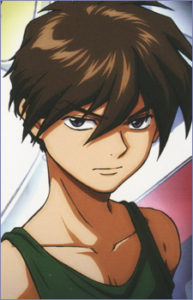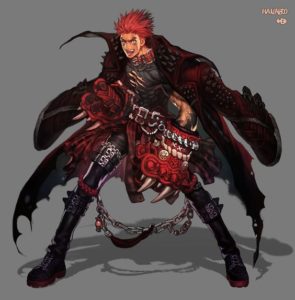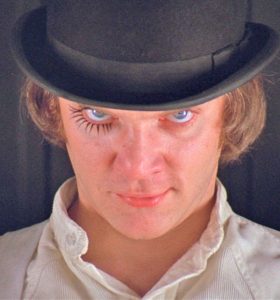When you create a character in a tabletop RPG, you should focus on creating a character that’s interesting to you. The most balanced party will grow dull and gameplay will become rote if half the players have been coerced into playing characters they don’t care about. (“Who’s going to play a cleric? C’mon, somebody has to play a cleric.”)
That said, a few character archetypes usually make for dull or frustrating play, even though they seem interesting when you’re first imagining them.
 First up: the lone wolf. You know the type: the quiet loner whose parents are dead, who has no friends, who only speaks in monosyllables, who has no contacts in the outside world, who stands with arms folded in a corner of the tavern/bar, and normally doesn’t interact with anyone except to fight in combat.
First up: the lone wolf. You know the type: the quiet loner whose parents are dead, who has no friends, who only speaks in monosyllables, who has no contacts in the outside world, who stands with arms folded in a corner of the tavern/bar, and normally doesn’t interact with anyone except to fight in combat.
The problem with a lone wolf lies in its lone aspect. D&D and other fantasy tabletop RPGs build stories about groups, and a character who never interacts with the group, just goes along with whatever they say, won’t be interesting, and won’t be as useful as one that is actually plugged into the world.
Also, because the lone wolf keeps himself or herself aloof from the world, he or she generally doesn’t change. This lessens the drama of the game, since it’s unlikely that the character will learn from his or her mistakes.
 Some players leap in the other direction and create the mold breaker. This player builds a character that breaks genre, acts the opposite of the character’s typical class, or otherwise doesn’t fit into the game’s expectations. They create a pacifist child in a combat-heavy game, a goblin who doesn’t speak or understand the Common language, or a cleric who refuses to heal.
Some players leap in the other direction and create the mold breaker. This player builds a character that breaks genre, acts the opposite of the character’s typical class, or otherwise doesn’t fit into the game’s expectations. They create a pacifist child in a combat-heavy game, a goblin who doesn’t speak or understand the Common language, or a cleric who refuses to heal.
Note that I’m not talking about a character that deviates from a classic trope. There’s nothing wrong with a paladin who’s not particularly moral, a wizard who likes to get drunk, or a cleric who focuses more on combat than healing. In contrast, the mold breaker is specifically built as the direct opposite of a particular bedrock of the game.
The problem with mold breakers is that they typically make the game hard for everyone else. The rest of the party now has to protect the pacifist child, or constantly figure out ways to communicate basic information with the mute goblin. It’s like agreeing to play a football game in which the other players have to carry you every time you catch the ball.
 A few players want to spice up a game by playing a chaotic evil character in a mostly lawful good party. Their character lies, cheats, steals, and murders at every opportunity. Often, these players use this as an excuse to be selfish. Another character gets a neat item the player wants, so the PC steals it, because “that’s what my character would do.”
A few players want to spice up a game by playing a chaotic evil character in a mostly lawful good party. Their character lies, cheats, steals, and murders at every opportunity. Often, these players use this as an excuse to be selfish. Another character gets a neat item the player wants, so the PC steals it, because “that’s what my character would do.”
The biggest problem lies in the social cohesion point above. This kind of character not only won’t fit the party; it will act in opposition to the party, as surely as placing a gazelle in the midst of a pack of lions.
There’s another problem with this, though: lawful good people stop evil. If being chaotic evil is “just what your character will do,” then attacking your chaotic evil character and killing him or her is “just what the other characters would do.” It’s a great way to create a short-lived character, and to piss off the rest of the group. And to not get invited back.
Again, there’s a big difference between a slightly mischievous character and one sows destruction to the detriment of the party.
 Finally, many of us have been guilty of creating the fourth archetype, often as our first RPG character: the blank face. This character is just an average Joe or Jane: neutral in outlook, average in appearance, with an uneventful life, no strong opinions, and no goals.
Finally, many of us have been guilty of creating the fourth archetype, often as our first RPG character: the blank face. This character is just an average Joe or Jane: neutral in outlook, average in appearance, with an uneventful life, no strong opinions, and no goals.
While easy to play–there’s practically nothing to play–this character won’t be fun. You’ll have nothing special to contribute during conversations. Nobody will remember your character.
The blank face should not be confused with the “potential” character, where a player isn’t sure of his or her character’s personality, backstory, etc. and discovers it in play. The blank face is designed to be generic and bland, to “not get in the way of everyone else’s fun.” But part of the fun comes from everyone interacting, so for goodness’s sake, build something interesting.
